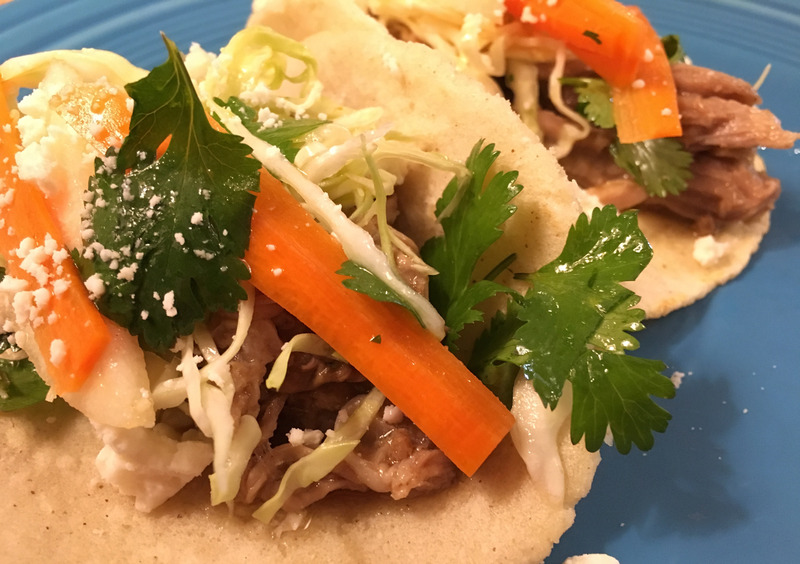The Local newsletter is your free, daily guide to life in Colorado. For locals, by locals.
Take one look at my kitchen and you’ll know that I adore cooking gadgets. There are the small things (candy thermometer, a cookie press for that heirloom recipe I make once a year, jalapeño corer) and the big ones (vacuum sealer, stand mixer, rice cooker). My chaotic pantry is the opposite of KonMari-style simplified organization.
But for a long time, there was one obvious item that I didn’t own: a slow cooker. I couldn’t justify the cost and—more importantly in an urban home—the footprint of the colossal machine. But every time I visited a friend who had one, I’d sidle up and start asking questions. What do you make? Is it just good for chili? Do you really leave it running when you (gasp!) leave the house?

That final question was the essential one. I’m slightly really terrified about kitchen fires. I unplug the toaster after each use. I pull my electric water kettle at least a foot from the wall. And so on. The thought of leaving a kitchen appliance on while I left the house was unfathomable. Yet, this was exactly the feature everyone applauded. People assured me that you just “set it and forget it,” but I knew I’d be the “set it and fret it” type.
Then my mom shared her secret: Set the slow cooker before you go to bed. This would assuage my fears of something going amiss; I’d be right there after all. So, I tested it while staying at her home one night. Like a new parent, I woke every hour to check my concoction, a pulled pork recipe with tomatillo sauce that I’d mastered on the stove, but easily converted to the slow cooker. The next morning, I was sleepy but the pork practically fell apart it was so tender.
Inspired, I checked out just about every cookbook Denver Public Library had on the subject, assembled a stack of recipes, and collected tips. I learned that, yes, the slow cooker is really best for chilis, stews, and braises, but can also be used to make mashed potatoes and poached pears. Even better, a little prep work—sautéing onions before adding to the slow cooker—can build sauces with more dimension.
Next, I tested recipes. The very thought of a disastrous attempt at an egg bake with Gruyère and prosciutto still makes me ill (it sounded so promising!). A tomato and fennel soup was delicious, but included so many pre- and post-slow cooker steps I wondered why I’d bothered at all. I was just about to give up on the entire experiment when I found Sam Sifton’s “Vaguely Vietnamese Slow Cooker Pork Tacos” on The New York Times’ website. An accompanying article spelled out my concerns about slow cookers, so I decided that Sifton’s recipe met my criteria for simplicity and safety. I gave it a try.
I cook several new recipes every week. Many are good; only a few are great. Even fewer inspire an enthusiastic reaction from all at the table. In this case, that response involved my family grabbing chunks of pulled pork (each morsel dripping with a sauce tinged with just the right amount of sweet and sour thanks to a healthy dose of fish sauce and ginger) directly from the slow cooker. Paired with homemade tortillas and a quick slaw, the tacos were simple enough for a tasty weeknight meal. But why stop there? You can serve it at a dinner party and everyone would assume you stood over the stove all day. (Your guests don’t need to know you just threw it in a pot.) I made the recipe again this week, and I’ll make it later this month for guests. I guess this means I’m finally a slow cooker convert—even if it took me a while to get here.
A few more slow cooker tips:
- Skip a Step: Slow cookers do a marvelous job on dried beans, especially in soups, which means you can skip the typical soak-for-12-hours routine.
- Warm It Up: Not every model has a “keep warm” function, which kicks in when the cooking time is up. Look for one that does, especially if you want to set up the recipes to cook overnight. Plus, it comes in handy when you’re hosting a Broncos party as a way to keep your queso from turning into cold sludge.
- Size Matters: Slow cooker recipes often indicate what size slow cooker you should use; pay attention. While some limitations are obvious (you can’t fit a full roast in a small unit), others aren’t (liquid quantities may need adjusting). If you are cooking for a family, I’d suggest something in the 5- to 6-quart range.








